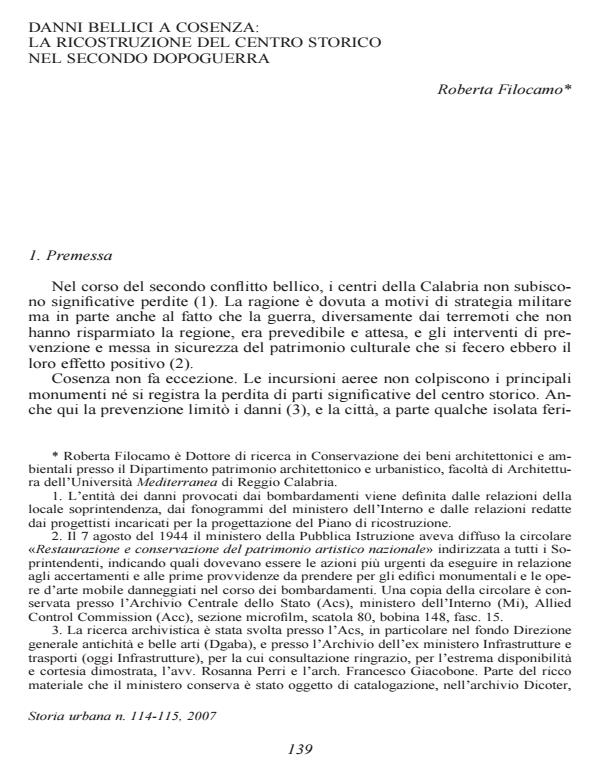Danni bellici a Cosenza: la ricostruzione del centro storico tra rinnovamento urbano e tutela degli antichi rioni nel secondo dopoguerra
Journal title STORIA URBANA
Author/s Roberta Filocamo
Publishing Year 2007 Issue 2007/114-115
Language Italian Pages 25 P. 139-163 File size 3115 KB
DOI
DOI is like a bar code for intellectual property: to have more infomation
click here
Below, you can see the article first page
If you want to buy this article in PDF format, you can do it, following the instructions to buy download credits

FrancoAngeli is member of Publishers International Linking Association, Inc (PILA), a not-for-profit association which run the CrossRef service enabling links to and from online scholarly content.
Also Cosenza suffered bomb damage in August 1943, with the local authorities having to implement alert and emergency measures. The solutions adopted were aimed at preserving historic/artistic assets and associated buildings. To this end, the competent authority implemented preventive measures, followed by a survey of the damage the extent of which was found to be minimal, to the point that the symbolic assets of he city were virtually unscathed. Subsequently, the local authority, prompted by national reconstruction policy, turned its attention to road layout and to overhauling the image of the city. Believing that the war offered a pretext for reorganizing the urban texture on the strength of an official project approved in 1912, it used subsequent expansion plans for operational guidance which regrettably did not result in any official town plans being produced. A missed opportunity which, through partial implementation of the Reconstruction Plan and lack of effective town planning lasting up to the time the Vittorini Master Plan was approved, cleared the way for uncontrolled growth of the city without proper guidance for quality development.
Roberta Filocamo, Danni bellici a Cosenza: la ricostruzione del centro storico tra rinnovamento urbano e tutela degli antichi rioni nel secondo dopoguerra in "STORIA URBANA " 114-115/2007, pp 139-163, DOI: